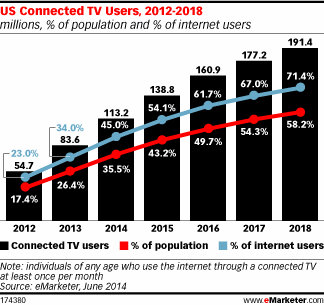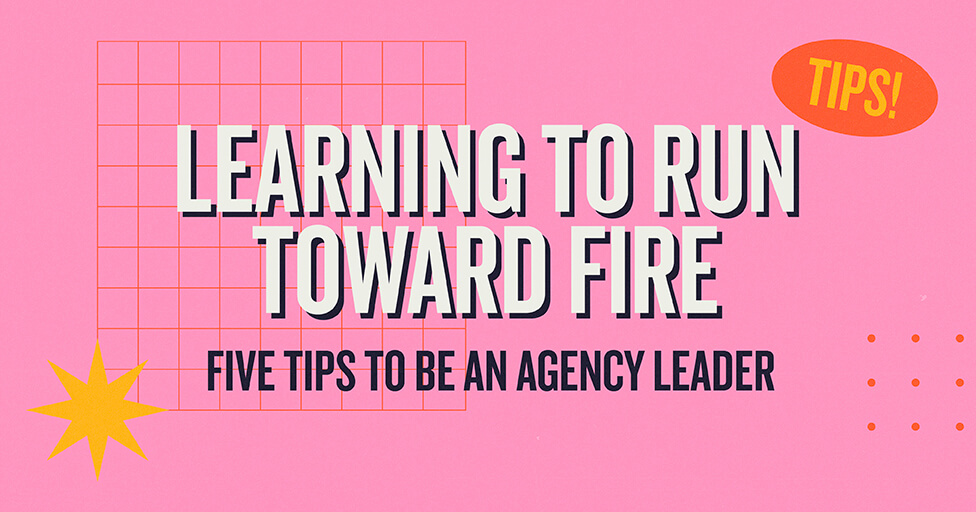
From Apple TV and Chromecast, to Xbox and Roku, the television ad-buying space is changing—and it’s changing for the better through Connected TV.
Connected TV is a way to use digital targeting and measurement capabilities and apply them to a more traditional platform: the television.

According to Frank N Magrid, more than half of the US population are now streaming content through a connected TV. The percent of US population that are becoming connected TV users are expected to increase to 71.4% by 2018 according to eMarketer.
How does Connected TV work?
Connected TV is available for any internet-able device that is connected to a TV. This includes set-top boxes like Apple TVs, Roku, and Chromecast. It also includes gaming consoles, BluRay players and Smart TVs. Using these devices, a marketer can push out a video advertisement that appears before or in the middle of streamed video content, much like a traditional commercial.
What does this mean to an advertiser?
This is huge. Like, Godzilla huge. Currently digital advertisers are able to cookie a user and follow them around the internet learning about their search and purchase behavior, and then use that information to serve relevant ads to them. With connected TV, we can apply this sort of targeting to a TV screen in addition to a computer, phone, or tablet, thus, bringing digital insight to traditional media.
When the content is more relevant, then the audience is more likely to remember and engage with the ad and the brand. According to eMarketer, connected TV audiences engage with ads 67% of the time on average—one of the highest engagement rates in digital marketing today.
How is engagement measured?
Mobile video is measured in completion rate, which describes whether a user finishes a video without skipping it or how much time passes before a user skips the ad. To add to completion rate, many advertisers measure video in viewable completion rate (VCR), which is the rate at which a user finishes a video within view (shown on the screen, above the fold). Traditional pre-roll video has a 17% completion rate for a 15-second video. On average, brands are seeing 86% VCR with Connected TV.
How does buying Connected TV compare to Traditional TV?
With a traditional commercial, advertisers buy based on the market, program, and station they wish to be on. For example, an advertiser could run an ad in Kansas City during Fox News in the evening. Ratings are available to predict the likely audience size and target demographic that would see that commercial.
With Connected TV, advertisers buy based on completed views. This means advertisers only pay when a user has watched the video to the end. By doing this, advertisers avoid paying for people that skip the ad.
What does this mean to a brand?
Historically, TV advertising on a national scale has been too cost-prohibitive for many smaller brands. However, connected TV has now made that possible given the reduced investment level needed. This opens up new opportunities for brands with smaller budgets to advertise to a national audience.
Check out this example of how a local car dealership is using Connected TV.
Connected TV is still in its infancy – meaning there are still some kinks that need to be worked out and it doesn’t have the volume of scale that traditional TV enjoys. Even so, it can be a powerful part of your next media buy when used properly. To see if it’s a good fit for you, just drop us a note.
Subscribe to our newsletter
Get our insights and perspectives delivered to your inbox.


